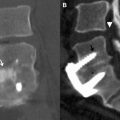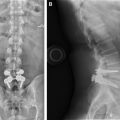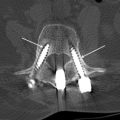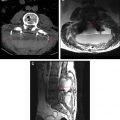Few tasks in imaging are more challenging than that of optimizing evaluations of the instrumented spine. The authors describe how applying fundamental and more advanced principles to postoperative spine computed tomography and magnetic resonance examinations mitigates the challenges associated with metal implants and significantly improves image quality and consistency. Newer and soon-to-be-available enhancements should provide improved visualization of tissues and hardware as multispectral imaging sequences continue to develop.
There are few imaging tasks more challenging to the radiologist than optimizing evaluations of the instrumented spine as there is significant artifact induced by implanted metal devices on both magnetic resonance (MR) imaging and computed tomography (CT). MR imaging artifacts are mainly caused by volume magnetic susceptibility mismatch between metal devices and tissue. In CT, the issues are beam hardening and streak (BHS) artifacts. The purpose of this article is to describe the critical techniques for MR and CT imaging of the postoperative spine, focusing on key technical factor adjustments; the value of innovations, such as dual energy CT (DECT); and new MR techniques, such as metal artifact reduction and chemical shift imaging.
Managing Susceptibility
Metal artifacts result from the high magnetic susceptibility of hardware with respect to surrounding soft tissues. Materials used in biomedical implants include stainless steel, cobalt chrome, titanium, and rarely ultrahigh molecular weight polyethylene. Alloys that have less magnetic susceptibility are being trialed, including aluminum/platinum/niobium. To best depict anchoring bone, surrounding soft tissues, and implanted hardware, one must minimize local susceptibility-based anatomic distortion and signal loss (see Table 2 ). Metallic implants disrupt the local static magnetic field (B), which then alters frequency-encoded and slice-selective image data. The local magnetic B o perturbations produce images with a combination of signal loss, pixel pileup (seen as peripheral high signal) and distortion near metal implants leading to spatial mismapping of information. The degree of distortion depends on the type of metal (for example, stainless steel is worse than titanium) as well as the field strength of the magnet. Susceptibility affects the scale, with the strength of the magnetic field producing particular challenges when scanning at 3 T (see Fig. 10 ; Fig. 11 ).
Small Voxel Sizes
Minimizing voxel size via slice thickness, field of view, and imaging matrix decreases susceptibility. The smallest voxel sizes are more practical at higher magnetic field strengths, partially ameliorating the potential for greater artifact ( Fig. 15 ).










